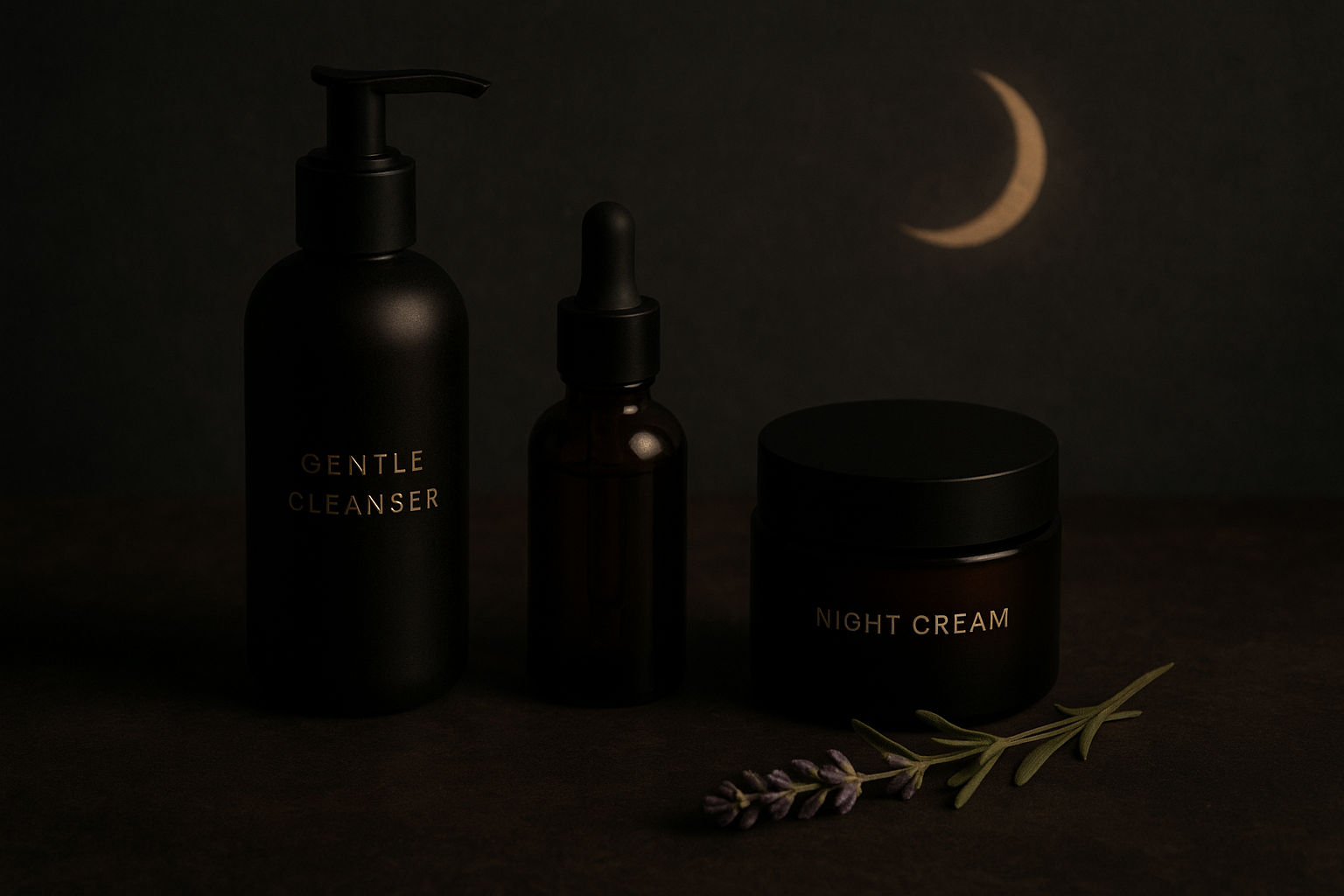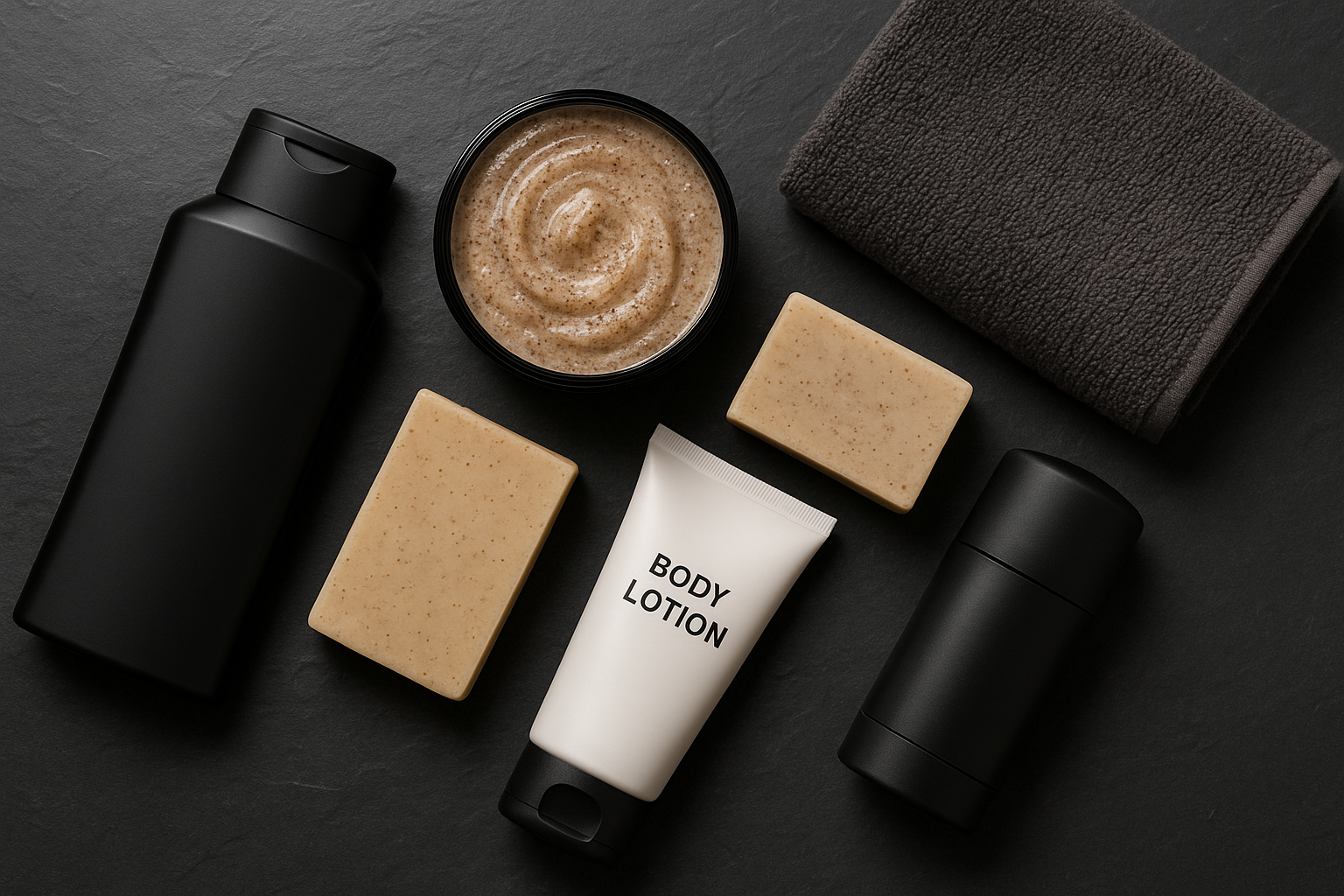We live in a golden age of men’s hair styling.
With the decline in popularity of the faded back-and-sides, long on top trend that dominated the past few years, we currently find ourselves without a must-have, dominant style. The only downside to this, as we see it, is that you’ll have to spend a little longer thinking about what to ask for next time you visit the barbers. The upside is an almost unlimited scope for creativity.
This freedom to express yourself - to tailor your appearance, through your hairstyle, in whichever way you choose - is augmented by an unprecedented variety of styling products. Pomades, waxes, gels and pastes are all available in abundance, each offering a completely different way in which to style your hair. Do you want a wet look, or something more natural? A firm hold, or something more flexible? Whatever you want to do with your hair, there’s a product available.
The trick, of course, is knowing exactly which product to use. That’s why we’ve put together this guide: to help you learn, once and for all, the differences between the different options. Armed with that knowledge, choosing your next product - and achieving a style you’ve previously only imagined - will be a cinch.
What is Pomade?
Everyone knows that fashion is cyclical, and in pomade - and the styles to which it’s best suited - we have a perfect example. It was the kind of product “teddy boys” used back in the 50s and 60s, to emulate their idols’ pompadours. When that style died off so did pomade, only to make a comeback - alongside the pomp - in the early-to-mid 2010s.
Generally speaking, there are two main types of pomade: water-based and oil-based. Both should provide the strong hold needed to help you achieve a firm style, but each does have its individual benefits. Water-based pomades tend to be less greasy, and accordingly easier to wash out. With oil-based pomades, it’s easier to rework your style even after the product has been applied. The fact that they’re harder to wash out can also be a benefit, as you can keep a style in place for multiple days, with only minimal reapplication of the pomade needed.
As for the other ingredients, historically - in addition to petroleum - pomade was made of lard and… bear fat. Sounds appealing, right? Thankfully, that’s all changed now.
Modern pomades tend to be made from more appealing ingredients, like beeswax, natural oils (if you do opt for an oil-based pomade) and aloe vera. Beeswax or similar vegetable waxes (e.g. carnauba or candelilla) provides the strong hold for which pomade is famous, without being overly greasy. The oils - coconut oil being the most popular - help to both strengthen and sooth your hair, and can also give a surprisingly firm hold. Aloe vera’s benefits are too numerous to list here, but it can do wonders in soothing your scalp and strengthening your hair.
In terms of its actual application, pomade requires a little more skill than other types of hair products. Your hair should be damp, but not wet; a light toweling after you wash it should do the trick. This is strong stuff, so be sure to begin with a little bit - around a penny-sized amount - work that around evenly, then add more as needed. Work it around your entire scalp to start with, then begin to form your chosen style. If you’re looking for a Don Draper-style slick-back, or any kind of parting, be sure to use a comb here. When done correctly, a pomaded style should last all day, without any need to apply more product.
What is Wax?
In terms of its ingredients, hair wax shares a number of properties with pomade. As we mentioned, wax is an integral part of most pomades, with the most common type - beeswax - also found in many hair waxes. Other frequent ingredients of hair wax include shealoe butter and lanolin.
Whilst it might be made of similar stuff, however, wax actually offers a very different styling experience to pomade. In short, it’s much more versatile, but is simply not as strong. It tends to suit short and medium-length hairstyles, compared to the longer styles for which pomade is perfect. It has less of a shiny finish, and it doesn’t stiffen your hair. It also doesn’t hold for nearly as long as pomade; that mightsound like a disadvantage, but - if you take some hair wax with you when you’re on the go - it actually gives you the opportunity to restyle your hair whenever you choose. Finally, one of wax’s biggest plus points is the increased texture it gives, making it an excellent option for those with thinner hair.
When you’re applying wax, you must make sure that your hair is dry. If it’s wet, then the wax simply won’t hold your style. Once your hair is nice and dry, begin with a penny-sized amount, warm it up between your palms, and apply it across your whole scalp. Add more as you begin to form your chosen style. Be sure to use your fingertips as you do so; given its malleable nature, it’s easy to create a detailed, precise style using wax. If you’re finding that your style isn’t holding for long enough, consider applying some hairspray after you’ve finished with the wax, to keep everything in place throughout the day.
What is Clay?
Hair clay does share similar characteristics to wax, but there are important differences in both suitable styles and application.
All hair clays contain - you guessed it - clay. The most common type is bentonite, a naturally-occurring substance which is a form of volcanic ash. Bentonite has actually been used for centuries as a healing clay, which sounds like exactly the kind of thing we’d like to have on our head. The natural nature of this product also makes it hugely beneficial to your hair’s health: it can nourish the scalp, and even boost the rate of hair growth. Other type of clays many hair styling clays contain is kaolin and green clay.
Like hair wax it’s a brilliantly versatile product, perfect for forming almost any style on short or medium hair (generally, it’s a better choice for longer styles than wax). It offers a firm hold which should usually last throughout the day, and gives an extremely impressive amount of volume to your hair without being greasy, arguably adding more thickness than any other type of product. It also does this whilst giving a matte finish, perfect for those gentlemen who prefer more of a natural look.
To apply hair clay, it’s best to blowdry your hair or, if you prefer a bit more shine, you can also leave your hair a little damp after washing it. Just run a towel over your head for a few seconds, and that should do it.
The key to successfully using hair clay is warmth, for both activating its ingredients and making it easier to spread. Begin by giving your hair a quick blow dry, already styling it in your chosen direction. Then, take a penny-sized amount of clay and rub it between your palms until it’s nice and warm. Work from the back as you style your hair, adding more product as you go. If you’re going for a strict slick-back, or a parting, you can use a comb to finish up. Clay doesn’t set or harden, meaning that - if needs be - you can subsequently rework your style throughout the day.
What is Gel?
Gel is the oldest men’s hair product in history. There’s evidence of it being used by the Ancient Egyptians as far back as 3,500 BCE. It has remained popular in modern history, becoming synonymous with slick-backs and combovers in the early to mid twentieth century, punks in the 70s and 80s, and boy bands in the nineties.
As you can probably guess, hair gel is not the most natural of products. Whilst it is primarily water-based, it usually consists of synthetic polymers, made up of a heady cocktail of chemicals which are difficult enough to spell, never mind pronounce. Having said that, there are gels on the market which use more natural polymers, and contain ingredients like aloe vera.
Either way, hair gel is very much the product of choice for those looking for the firmest possible hold, working equally well for short, medium and long hair. It sets quickly after application, stiffening the hair whilst giving it a wet look. Anything but the lightest, cheapest gel will invariably keep your hair in place all day, with no need for restyling. Be sure to wash it out thoroughly after use, however; if left in place too long, the chemicals in the gel will wreak havoc on your hair’s health.
Perhaps hair gel’s biggest strength is its versatility. You can basically apply it whenever and however you want. Using it while your hair is still damp will produce more of a wet look; application on dry hair will lessen this effect. Either way, you can sculpt whatever style you like with hair gel, and be confident it’ll hold. For those less experienced with hair styling, gel provides a solid entry point.
What is Styling Paste?
Like gel, styling paste is an extremely versatile product, capable of creating essentially any style you can think of. In fact, this might just be the most flexible option on the market. That aside, it has far more in common with wax and clay in terms of its characteristics, although it is a thick liquid rather than a waxy substance.
Styling paste is thicker than pomade in its consistency, but its water-based nature means that it’s still nice and easy to wash out. It adds a tremendous amount of volume, making it an excellent option for those with thinner hair, whilst still providing the necessary hold for both short and medium styles. Despite that strength, it remains extremely easy to rework throughout the day, if your ‘do needs a touch-up.
Styling paste’s versatility means that you can apply it however you please. Working it into damp hair will provide a stronger, longer-lasting hold, useful for those with longer styles. Even on dry hair, however, it should still provide an excellent hold, and the matte look for which it’s famed will be further accentuated. Finally, if you’d like to boost the texture and volume of your style - whether it’s short or medium length - try adding a little styling paste before blow-drying your hair for some seriously impressive results.
What is Sea Salt Styling Spray?
Sea salt styling spray (try saying that five times fast) may currently be one of the lesser-known men’s hair styling products, but we believe that’s set to change verysoon. It’s simply too good of a product not to break into the mainstream.
Sea salt styling spray is not a standard hairspray, in the sense of being something you just apply after you’ve already styled your hair to hold it in place. It’s a styling product unto itself. In terms of its ingredients, the name really gives the game away: it’s a spray, formulated mostly from sea salt. Whilst it does have secondary agents, these tend to be things like clay, meaning that it remains an extremely natural product. The salt in the spray effectively dehydrates your hair, absorbing the moisture of your natural oils. This might not sound like the most desirable effect, but in actuality it can really make your hair come alive, adding an excellent level of volume. If you’ve got naturally curly hair, this will enhance it. If you’ve got straighter hair, this will add texture. There’s really nothing to which sea salt styling spray is unsuited.
This is another extremely versatile product, suitable for short, medium and long hair, across a range of different styles. Its volumizing nature also makes it a great choice for those with thinner hair. Even better, it’s incredibly simple to use. Damp hair is preferable for application (with a subsequent blast from a hairdryer to really set the style in place), but - if you’re after a casual, tousled look - this can easily be achieved with dry hair. Just spray the product evenly across your hair, use a comb or your fingers to achieve your desired look, and expect an impressive hold throughout the day.
Seven Potions Pomade
Pomade has seen an enormous resurgence in recent times, and this rapidly increasing popularity has seen the market flooded with products. Unfortunately, however, the majority of these pomades seem to have simply been released to make money from the trend, with little focus on the most important factor of all: quality.
That’s where we come in. Seven Potions Pomade offers the strong hold you need to keep any style in place, without making your hair uncomfortably dry or crunchy, as happens with other products. Its medium to high shine makes your hair appear healthy and well-maintained, without a hint of greasiness offering your the most naturally looking pompadour or side part style.
Aside from simply helping you to look dapper, our priority was to create a pomade that was genuinely good for your hair’s health. That’s why we included only natural derived ingredients like carrier oils, which moisturise both your hair and the skin beneath. In fact, all of the ingredients in Seven Potions hair products are natural, so that - however regular your usage - you needn’t worry about your hair’s health. Its water-based nature also means that our pomade is easy to wash off; it won’t hang around for days on end, unlike many of the alternatives.
If you thought an all natural, non-greasy pomade which also offered a strong hold was an impossible dream, consider yourself corrected.
Seven Potions Hair Clay
Like pomade, a typical criticism with hair clay is that it can dry out your hair and your scalp. As with our aforementioned pomade, however, this is not a factor with Seven Potions Hair Clay. We’ve made use of carrier oils here too, to nourish your hair and your scalp whenever you use our product. That’s just one of the natural ingredients in this all-natural hair clay.
In terms of styling, Seven Potions Hair Clay offers the flexibility for which clays are renowned. Whatever your hair length (although we’ll admit, it works particularly well with short hair), it’ll keep your style in place all day long, complete with a classy matte look. If you want to change things up, perhaps as you head out for the evening, reworking your style is a doddle. When it does come time to wash your hair again, this clay certainly won’t stick around (another benefit of our penchant for natural products).
Finally, for those gentlemen who are thinning a little on top, Seven Potions Hair Clay will work wonders, offering a bountiful boost to your hair’s volume with minimal effort on your part.
Seven Potions Salt Texturizing Spray
Compared to other men’s styling products, salt spray has flown largely under the radar to this point. That’s all set to end in the near future, and here at Seven Potions we’re determined to be at the forefront of the coming... “sea” change.
As with our pomade and wax, we prioritized the organic approach with the Seven Potions Salt Texturizing Spray. All of the ingredients are natural, making it significantly healthier for your hair than many of the alternatives out there, as well as aiding a fine matte look.
This is truly an incredibly versatile product, working equally effectively on all types and lengths of hair. If you’re after a more relaxed appearance, this will allow you to effortlessly achieve a beach look. If you’re after something more structured then this works just as well, thanks to a hold that’s medium in strength, whilst still being flexible in nature. Longer hair will appear more voluminous, and even naturally wavy hair can be nicely styled. You can also use it as a prestyler - prior to blow-drying your hair, perhaps - before applying another Seven Potions product afterwards for the finishing touches.
Closing thoughts
So there you have it: a comprehensive guide to all of the major men’s hair styling options currently available. Whatever your hair type, length or style, there’s a product out there that’s perfectly suited to your needs.
We also, of course, touched on our own products. Seven Potions might be a young company, but when it comes to hair styling we’d back our knowledge - and our passion - against anybody’s. Our pomade, wax and salt texturizing spray each offer an excellent hold, whilst consisting of all natural products which are great for your hair and your skin.
We’re looking to make a name for ourselves in this industry, not through brash talk or overblown marketing, but through offering truly unique products with a premium on quality. All three of our Seven Potions hair styling products will soon be available for purchase. In the meantime, we kindly invite you to watch this space.



